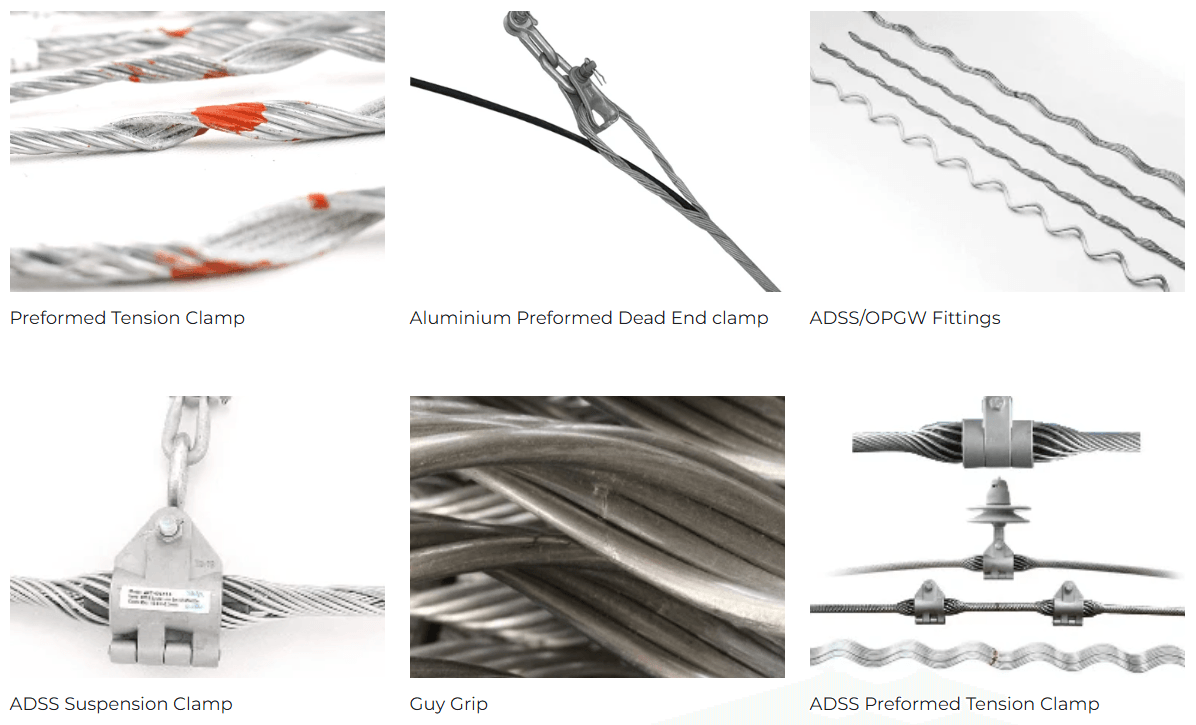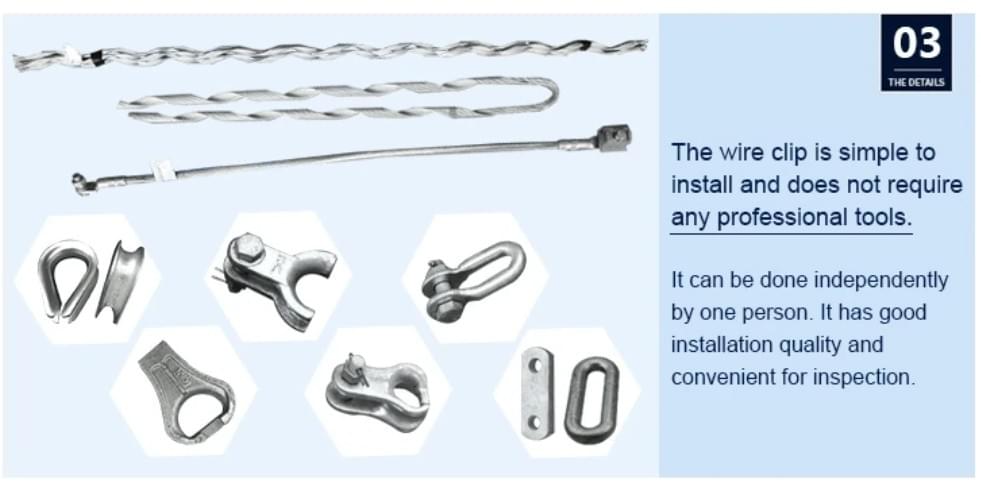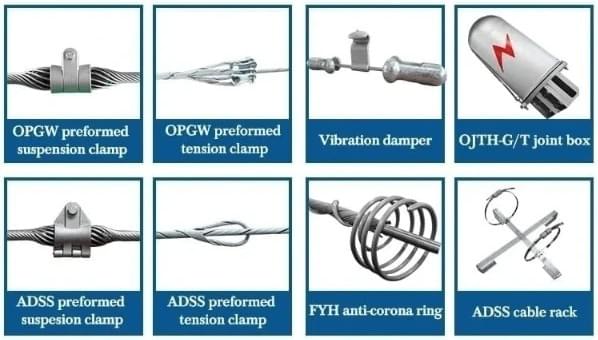Introduction

But what is a parallel groove clamp? This versatile device serves crucial roles in various applications, ensuring that electrical systems are safe and efficient. As we delve deeper into the world of PG clamps, we will uncover their unique features, benefits, and how they compare to other types of clamps.
Understanding the Parallel Groove Clamp
A parallel groove clamp is designed specifically for joining conductors in electrical transmission systems. Its unique design allows for a secure grip on multiple cables simultaneously while maintaining excellent conductivity. By understanding what a parallel groove clamp is and how it operates, users can appreciate its significance in creating stable and long-lasting electrical connections.
Applications and Benefits of PG Clamps
The applications of parallel groove clamps are vast, from utility companies to industrial settings where high-voltage cables are prevalent. These clamps not only facilitate efficient electrical connections but also enhance structural integrity by distributing stress evenly across cables. The benefits of using PG clamps include improved reliability, reduced maintenance costs, and increased safety in cable systems.
Key Differences with Other Clamps
While there are many types of clamps available on the market, understanding the key differences between a parallel groove clamp and others like sash clamps can help you make informed decisions for your projects. Unlike sash clamps that primarily serve woodworking purposes by holding pieces together during assembly or finishing work, parallel groove clamps focus on securing electrical conductors under high tension conditions. Knowing these distinctions ensures that you choose the right tool for your specific needs.
What is a Parallel Groove Clamp?

A parallel groove clamp, often referred to as a PG clamp, is an essential component in electrical transmission systems. This innovative device is designed to securely connect conductors, ensuring reliable performance under various conditions. Understanding what a parallel groove clamp is and its applications can significantly enhance the efficiency of electrical installations.
Overview of Design and Features
The design of a parallel groove clamp is both functional and robust, featuring two grooves that allow for the secure attachment of conductors. Typically made to accommodate various conductor sizes, these clamps ensure optimal contact and minimal resistance between cables. The simplicity of the design belies its effectiveness; it provides a strong grip while allowing for easy installation and maintenance.
One of the standout features of the parallel groove clamp is its ability to distribute mechanical stress evenly across the connected conductors. This characteristic not only enhances durability but also reduces wear over time, making it an ideal choice for long-term applications. Additionally, many models come with built-in inspection points for ease of monitoring cable integrity.
Common Materials Used
When considering what materials are used in manufacturing parallel groove clamps, aluminum and copper are predominant choices due to their excellent conductivity and corrosion resistance. These materials ensure that the clamps maintain their performance even in harsh environmental conditions. Some clamps may also feature protective coatings or finishes that enhance their longevity and resistance to wear.
In addition to aluminum and copper, stainless steel components are often incorporated into designs for added strength where necessary. The combination of these materials allows parallel groove clamps to withstand significant mechanical loads while maintaining electrical efficiency. Overall, selecting high-quality materials contributes greatly to the reliability of these connectors in electrical systems.
Applications in Electrical Transmission
Parallel groove clamps play a crucial role in various applications within electrical transmission networks. They are primarily used for connecting overhead power lines or securing cables within substations where reliable connections are paramount. Their versatility extends beyond just power lines; they can also be utilized in telecommunications infrastructure where stable connections are essential.
Moreover, these clamps help maintain structural integrity by ensuring that cables remain securely attached under tension or during adverse weather conditions like high winds or storms. Understanding what a parallel clamp is used for highlights its importance not only in maintaining connectivity but also in safeguarding overall system reliability. As such, selecting appropriate parallel groove clamp sizes becomes vital for optimal functionality and safety across all applications.
What is a Parallel Clamp Used For?

Parallel groove clamps, often referred to simply as PG clamps, play a crucial role in various electrical applications. They are specifically designed to create secure connections between conductors, ensuring that electricity flows seamlessly without interruption. But what is a parallel clamp used for beyond just connecting wires? Let’s dive into the specifics.
Use in Electrical Connections
When it comes to electrical connections, parallel groove clamps shine as reliable connectors that ensure optimal conductivity and safety. These clamps are particularly effective in joining two or more conductors together, allowing for efficient power distribution across electrical grids. By securely holding the wires in place, they minimize the risk of disconnection or short circuits—a vital aspect of any robust electrical system.
In addition to their primary function of connecting conductors, parallel groove clamps also help maintain proper alignment and spacing between cables. This alignment is essential for preventing wear and tear on the cables over time. So next time you wonder what is a parallel groove clamp used for, remember that it’s not just about connection; it’s about maintaining integrity in your electrical systems.
Importance in Cable Systems
The significance of parallel groove clamps extends far beyond mere connections; they are integral components within cable systems themselves. In high-voltage applications, these clamps are essential for managing the mechanical and thermal stresses that can occur during operation. Their design allows them to accommodate various sizes and types of cables while providing consistent pressure—ensuring that no cable slips or loosens under strain.
Moreover, using parallel groove clamp connectors helps enhance overall system reliability by reducing potential points of failure within cable assemblies. They allow for easier maintenance and replacement when necessary without compromising system performance during repairs or upgrades. Understanding what is a parallel clamp used for leads us to recognize its importance in maintaining robust cable systems capable of withstanding environmental challenges.
Advantages in Structural Integrity
One of the most compelling reasons to use a parallel groove clamp is its contribution to structural integrity within electrical installations. The design ensures even distribution of force across connected components, minimizing localized stress points that could lead to material fatigue over time. When considering what is the function of PG clamp within an installation, it becomes clear: these clamps provide strength where it matters most.
Additionally, because they create such strong connections between conductors, they help reduce vibration and movement caused by external forces—factors known to compromise structural integrity if left unchecked. This durability means fewer maintenance issues down the line and greater long-term performance from your installation overall—an undeniable advantage when evaluating different connection methods like comparing what is the difference between a parallel clamp and a sash clamp.
In summary, whether you’re looking at how these clamps facilitate electrical connections or their broader importance within cable systems and structural integrity, one thing stands out: using high-quality parallel groove clamps can significantly enhance both safety and efficiency in any project involving electricity transmission.
What is the Difference Between a Parallel Clamp and a Sash Clamp?

When it comes to clamping tools, understanding the differences between a parallel groove clamp and a sash clamp is crucial for selecting the right one for your project. While both clamps serve to hold materials securely, they have distinct designs and applications that set them apart. This section will explore these differences in detail, focusing on their designs, strengths, and when to use each type.
Comparison of Designs and Functions
A parallel groove clamp is designed with two parallel grooves that enable it to grip cables or rods firmly without damaging them. This feature makes it particularly useful in electrical applications where maintaining the integrity of wires is paramount. In contrast, a sash clamp typically consists of a long bar with adjustable arms that can be tightened down on wooden pieces or other materials; it's primarily used in woodworking for holding workpieces together during assembly or glue-up.
The design of a parallel groove clamp allows for greater stability when securing electrical connections, making it an essential component in cable systems. The sash clamp's versatility shines in carpentry tasks where precise alignment of materials is necessary. Ultimately, while both clamps hold objects securely, their specialized designs cater to different needs: one focuses on electrical integrity while the other emphasizes woodworking efficiency.
Strength and Application Differences
Strength-wise, parallel groove clamps are engineered to withstand significant tension and stress typically found in electrical installations. They excel at managing cable stress by distributing loads evenly across their gripping surfaces—crucial for maintaining the reliability of power transmission systems. On the other hand, sash clamps are strong but are designed more for lateral pressure; they work best when applied to flat surfaces without requiring extensive load-bearing capabilities.
In terms of applications, you’ll find that parallel groove clamps shine brightly within electrical grids where longevity and performance matter most—think high-voltage lines needing secure connections! Sash clamps dominate workshops where woodworkers need reliable support as they create furniture or cabinetry. Each type has its own strength profile tailored precisely for its intended use; thus knowing what is a parallel clamp used for helps ensure you select appropriately.
When to Choose Each Type
Choosing between a parallel groove clamp and a sash clamp largely depends on your specific project requirements. If you're dealing with electrical connections or need something robust enough to manage cable systems effectively, then opting for a parallel groove clamp is wise—it ensures optimal performance under stress conditions while safeguarding your cables from damage!
Conversely, if your task involves woodworking—such as assembling cabinets or frames—a sash clamp will be your best friend due to its flexibility and ease of adjustment during different phases of construction work. By understanding what is the function of PG clamps versus sash clamps, you can make informed decisions that lead to successful outcomes in both electrical engineering and carpentry projects alike.
What is the Function of a PG Clamp?

The function of a PG clamp, or parallel groove clamp, is pivotal in ensuring the stability and efficiency of electrical systems. These clamps serve as essential components in various applications, particularly in electrical connections where reliability is non-negotiable. By understanding what a parallel groove clamp does, we can appreciate its role in enhancing overall system performance.
Role in Electrical Grid Stability
One of the primary functions of a parallel groove clamp is to maintain electrical grid stability. By securely connecting conductors, these clamps help prevent disruptions that can lead to outages or failures within the grid. The secure grip provided by a parallel groove clamp ensures that electrical connections remain intact under varying environmental conditions.
Moreover, the design of the parallel groove clamp allows for easy installation and maintenance, which contributes to long-term grid stability. With reliable connections facilitated by these clamps, utility companies can better manage their networks and respond effectively to fluctuations in demand. In essence, when you ask What is a parallel clamp used for? remember that it plays an integral role in keeping our power supply consistent and dependable.
Impact on Cable Stress Management
Another critical function of PG clamps lies in their ability to manage cable stress effectively. When cables are subjected to tension or environmental factors such as wind or temperature changes, they can experience stress that may compromise their integrity over time. A well-designed parallel groove clamp distributes this stress evenly across the cable's surface area, minimizing wear and tear.
This capability not only prolongs the life span of cables but also reduces maintenance costs associated with frequent repairs or replacements. Understanding What is the difference between a parallel clamp and a sash clamp? highlights how PG clamps are specifically tailored for electrical applications where stress management is crucial—something sash clamps simply aren't designed for. Therefore, using a parallel groove clamp ensures that your cable systems remain robust against external stresses.
Benefits for Long-Term Performance
The long-term performance benefits offered by PG clamps cannot be overstated; they are engineered for durability and efficiency over time. By employing high-quality materials and innovative designs, these clamps provide consistent performance even under challenging conditions—making them indispensable in various industrial settings. As you consider what sizes might be appropriate (parallel groove clamp sizes), it's essential to choose those that align with your specific application needs.
Additionally, using reliable components like the Parallel Groove Clamp Connector enhances overall system integrity while reducing downtime caused by equipment failure. As we explore What is a parallel groove clamp? further into its features and advantages becomes clear: investing in quality means investing in longevity and peace of mind for any project involving electrical connections.
Choosing the Right Parallel Groove Clamp Sizes

Selecting the appropriate size for a parallel groove clamp is crucial to ensure optimal performance in electrical connections. The right fit not only enhances the structural integrity of cable systems but also contributes to long-term durability and reliability. Incorrect sizing can lead to failures, increased stress on cables, and potential safety hazards, making it imperative to pay attention to parallel groove clamp sizes.
Importance of Correct Sizing
The answer lies significantly in its ability to provide secure connections that withstand environmental stresses. If the sizing is off, even the most robust materials can fail under pressure, rendering your connection ineffective and jeopardizing the entire electrical system.
Correct sizing allows for efficient load distribution along cables and minimizes wear over time. This is especially important when considering what is the function of PG clamps in maintaining grid stability and managing cable stress. Therefore, investing time in choosing the right size will save you from future headaches and costly repairs.
How to Measure for Optimal Fit
To measure for an optimal fit with a parallel groove clamp, start by determining the diameter of your conductors or cables that will be connected. Use calipers or a measuring tape for precise measurements; this ensures you know exactly what size you need when selecting your clamps. Additionally, consider factors such as insulation thickness and environmental conditions that may affect fitting.
Once you have these measurements, consult manufacturer specifications or sizing charts specific to parallel groove clamps. This will guide you in selecting a model that not only fits snugly but also performs well under expected loads and conditions. Remember that getting this right can make all the difference between a reliable connection and one fraught with issues.
Recommended Sizes from Spark Fittings
Their catalog includes options suitable for different cable diameters while ensuring compliance with industry standards—making them an excellent choice when you're pondering what is a parallel clamp used for?
Spark Fittings provides clear guidelines on how their sizes correspond with specific applications so you can easily find what fits your needs best without any guesswork involved. Plus, their commitment to quality means that choosing their products guarantees durability alongside performance—essential attributes when considering what is the difference between a parallel clamp and a sash clamp?
In summary, taking time to choose correct parallel groove clamp sizes can greatly enhance both safety and efficiency in your electrical systems while providing peace of mind against future complications.
Conclusion
In conclusion, parallel groove clamps are essential components in various electrical applications, ensuring optimal performance and reliability. Understanding what a parallel groove clamp is and its diverse uses can significantly enhance the effectiveness of electrical connections and cable systems. By recognizing the differences between a parallel clamp and a sash clamp, users can make informed decisions based on specific project requirements.
Ensuring Optimal Performance with PG Clamps
To ensure optimal performance with PG clamps, it's crucial to understand what a parallel clamp is used for in practical applications. These clamps provide exceptional support in electrical connections, maintaining structural integrity under various conditions. Regular inspections and maintenance of the parallel groove clamp connector will help sustain their efficiency over time.
The Role of Quality Assurance in Clamps
Quality assurance plays a pivotal role in the production of clamps, including parallel groove clamps. A well-manufactured PG clamp not only guarantees safety but also enhances performance by minimizing potential failures during operation. When considering what is the function of PG clamp within an electrical grid, it becomes evident that high-quality materials lead to improved reliability and longevity.
Innovation and Reliability from Spark Fittings
Spark Fittings stands out as a leader in providing innovative solutions for electrical hardware, including various sizes of parallel groove clamps tailored to meet industry demands. Their commitment to quality ensures that each product meets stringent standards while adapting to advancements in technology. With Spark Fittings' dedication to innovation, users can trust that their chosen parallel groove clamp will deliver both performance and durability for years to come.

